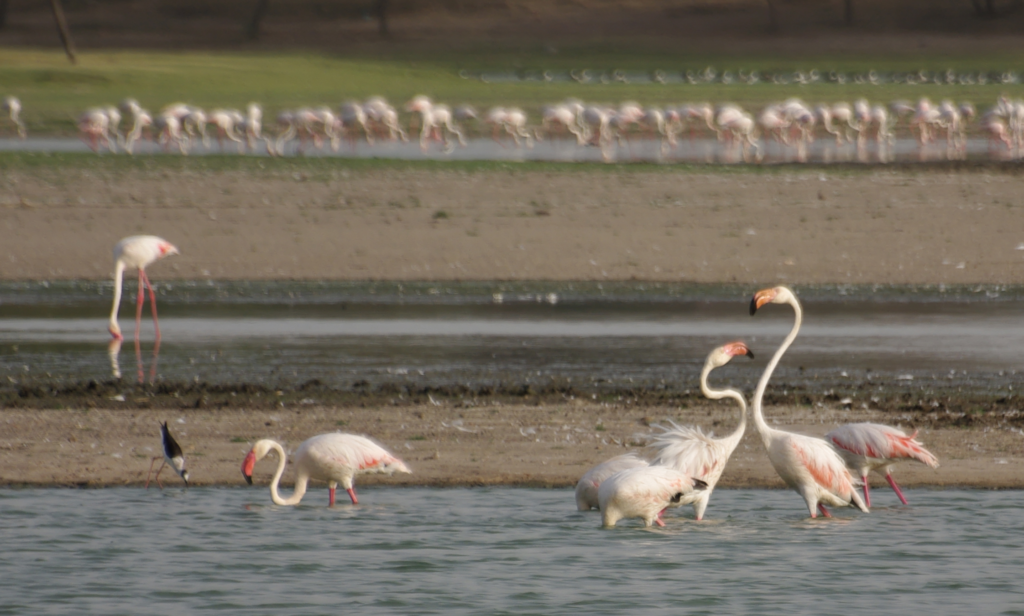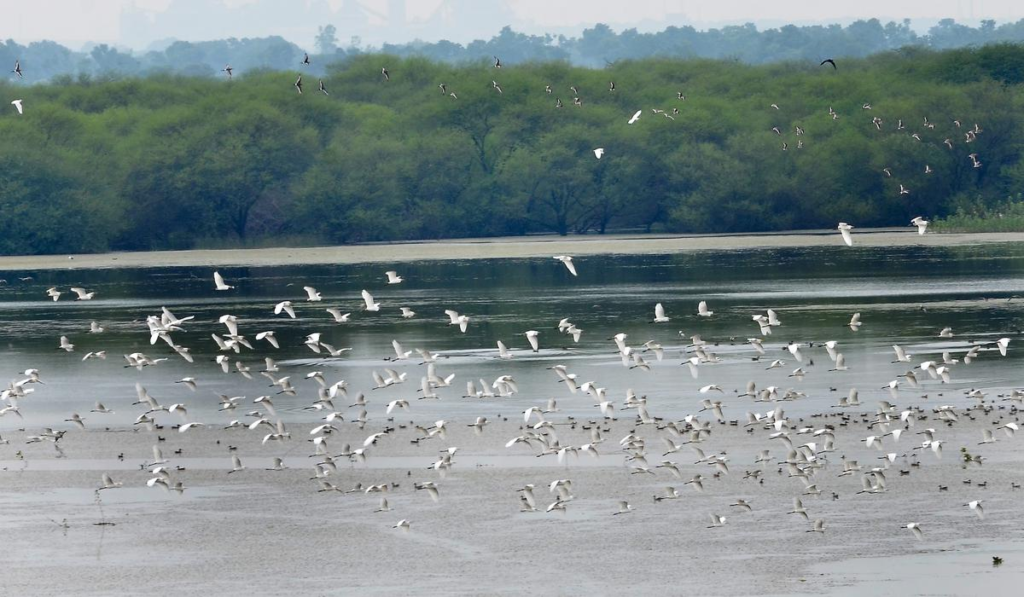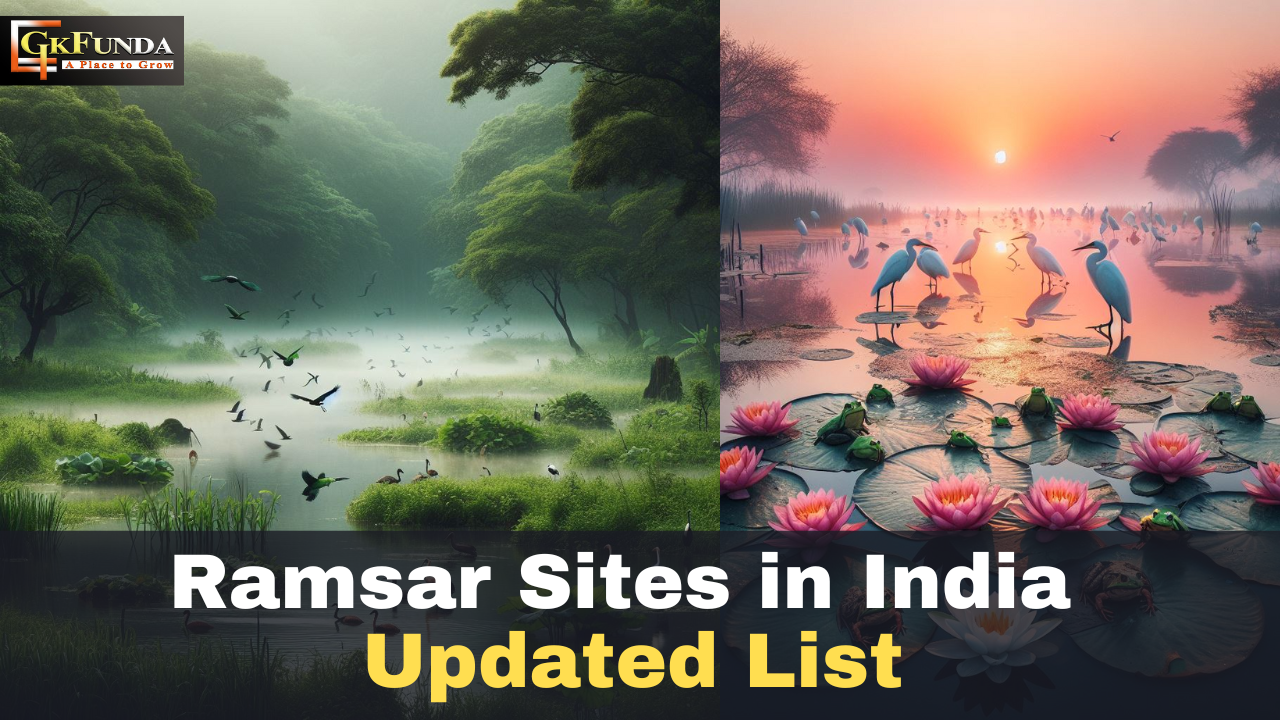India is home to a vast network of wetlands that are valued internationally. Diverse ecosystems, such as freshwater lakes, mangrove forests, coral reefs, and manmade reservoirs, can be found in these wetlands. These places provide essential habitats for a wide variety of plant and animal species, including economically valuable fish, endangered species, and migrating birds. The Ramsar designation encourages the preservation of these priceless habitats for the next generations. These designated sites in India are called the “Ramsar Sites in India”. For their preservation and protection, this sites Ramsar Convention recognized these as the Ramsar Sites in India.
What is a Ramsar Site?

A wetland that has been recognized by the Ramsar Convention as being of international significance is called a Ramsar Site. The Convention on Wetlands, an international accord, focuses primarily on the protection and wise use of wetlands. It was signed in 1971 in Ramsar, Iran, giving rise to its name, and it encourages global collaboration in the protection of wetlands and the resources they offer.
How many Ramsar Sites are in India?
The Ramsar zones of India are a veritable gold mine of bird variety for birdwatchers. Because they attract a variety of migratory species, the huge marshes are excellent birding locations. The Bharatpur Bird Sanctuary in Rajasthan, for instance, is known for its spectacular avian population, including the critically endangered Siberian Crane and the majestic Sarus Crane.
As of January 2024, India boasts a total of 80 Ramsar sites—wetlands of international importance designated under the Ramsar Convention. These sites play a crucial role in biodiversity conservation and sustainable use of wetlands. Besides the 75 other Ramsar sites, these are the newly added 5 Ramsar sites of India. They are-
- Karnataka’s Ankasamudra Bird Conservation Reserve.
- The Karnataka estuary is known as Aghanashini.
- Karnataka’s Magadi Kere Conservation Reserve.
- Tamil Nadu’sKaraivetti Bird Sanctuary.
- Tamil Nadu’s Longwood Shola Reserve Forest
Now, let’s start our multiple-choice questions (MCQ) on this topic for clear understanding and from an exam perspective.
1. What is the theme for World Wetlands Day 2024 in India?
A. Wetlands and Biodiversity
B. Wetlands and Climate Change
C. Wetlands and Human Wellbeing
Answer: C. Wetlands and Human Wellbeing.
2. Which sites were recognized as the first Ramsar sites in India?
A. Chilika Lake in Orissa and Keoladeo National Park in Rajasthan
B. Sundarban Wetland and East Kolkata Wetlands
C. Ashtamudi Wetland and Sasthamkotta Lake
Answer: A. Chilika Lake in Orissa and Keoladeo National Park in Rajasthan (the Coburg peninsula, Australia is the world’s first Ramsar site).

3. Which is the largest Ramsar site in the world?
A. Giri-Tumba -Main Bomba(Democratic Republic of congo)
B. Queen Maud Gulf(Canada)
C. Rio Negro(Brazil)
Answer: C. Rio Negro(Brazil).

4. Which state in India has the highest number of Ramsar sites as of January 2024?
A. Tamil Nadu
B. Uttar Pradesh
C. Karnataka
Answer: A. Tamil Nadu(Tamil Nadu has 16 Ramsar sites followed by Uttar Pradesh with 10).
5. Which country globally has the highest number of Ramsar sites?
A. U K
B. India
C. China
Answer: A. UK (the UK has 175 Ramsar sites followed by Mexico with 144 sites.)
An Overview of National Parks in Assam
6. What is the position of India globally of Ramsar Sites?
A. 3rd
B. 4th
C. 8th
Answer: B. 4th.
7. The Ramsar site ‘Thol Lake’ is situated in which states?
A. Gujrat
B. Haryana
C. Assam
Answer: A. Gujrat.

8. Nangal Wildlife Sanctuary is in which place?
A. Punjab
B. Uttar Pradesh
C. Karnataka
Answer: A. Punjab.
9. India signed the Ramsar Convention on which date?
A. 1st April 2002
B. 1st January 1986
C. 1st February 1982
Answer: C. 1st February 1982.
10. How many Ramsar Sites are there presently in India?
A. 30
B. 76
C. 80
Answer: C. 80 (5 new Ramser sites have been added on 1st February 2024).
11. What is a Ramsar site?
A. A wetland site designated to be of international importance under the Ramsar Convention.
B. A type of bird sanctuary.
C. A protected forest area.
Answer: A. A wetland site designated to be of international importance under the Ramsar Convention.
12. The newly added Ramsar site “ Magadikere Conservation Reserve” is in the state of India?
A. Tamil Nadu
B. Madhya Pradesh
C. Karnataka
Answer: C. Karnataka (This site was added in 2024).

13. When is World Wetlands Day celebrated?
A. 2 March
B. 2 February
C. 4 February
Answer: B. 2 February.
14. In which country is Ramsar city located?
A. Russia
B. Afganisthan
C. Iran
Answer: B. Afganisthan.
15. The ‘Pong Dam Lake’ is a Ramsar site in India, in which state is it located?
A. Haryana
B. Punjab
C. Himachal Pradesh

Answer: C. Himachal Pradesh.
16. What is the name of the only Ramsar site in Manipur?
A. Loktak Lake
B. Renuka wetland
C. Pong Dam Lake
Answer: A. Loktak Lake.

17. What is the largest Ramsar Site in India?
A. Sundarban Wetland
B. Loktak Lake
C. Ashtamudi Wetland
Answer: A. Sundarban Wetland.

18. What is the Smallest Ramsar wetlands in India?
A. Pong Dam Lake
B. Renuka Lake
C. Lokrak Lake
Answer: B. Renuka Lake (It is situated in Himachal Pradesh).

19. In which Ramser site in India, did the color of the lake change?
A. Lonar Lake,Maharastra
B. Tso Kar Wetland, Ladakh
C. Keetham Lake, Uttar Pradesh
Answer: A. Lonar Lake, Maharastra (The color of the lake turned pink due to a large presence of ‘Haloarchaea’ microbes).

20. What one of the following is a Ramsar site of Ladakh?
A. Pangong Tso
B. Hemis National Park
C. Tso Kar
Answer: C. Tso Kar (Ladakh have 2 Ramsar Sites. They are Tso Kar and Tsomoriri Lake).


